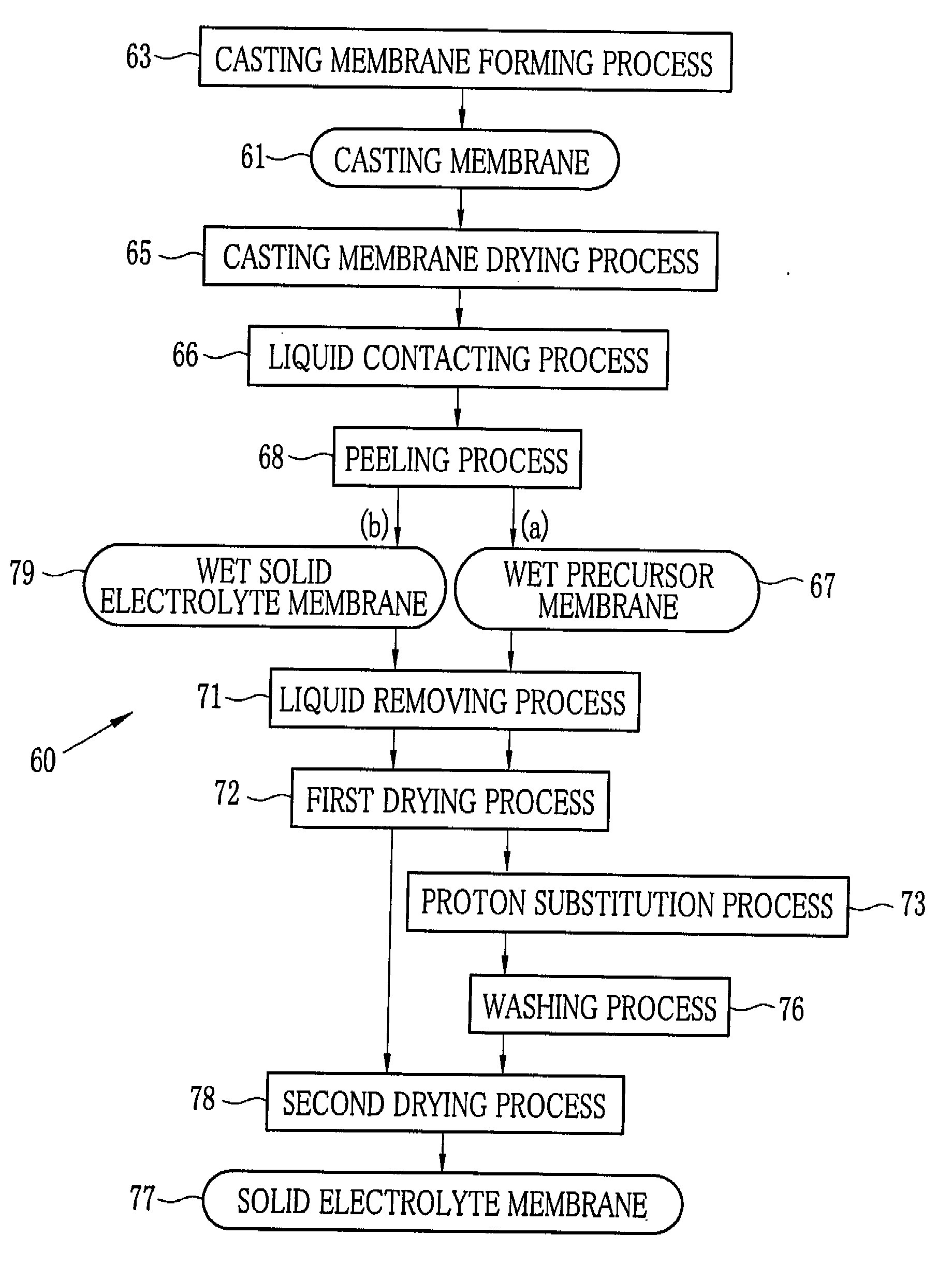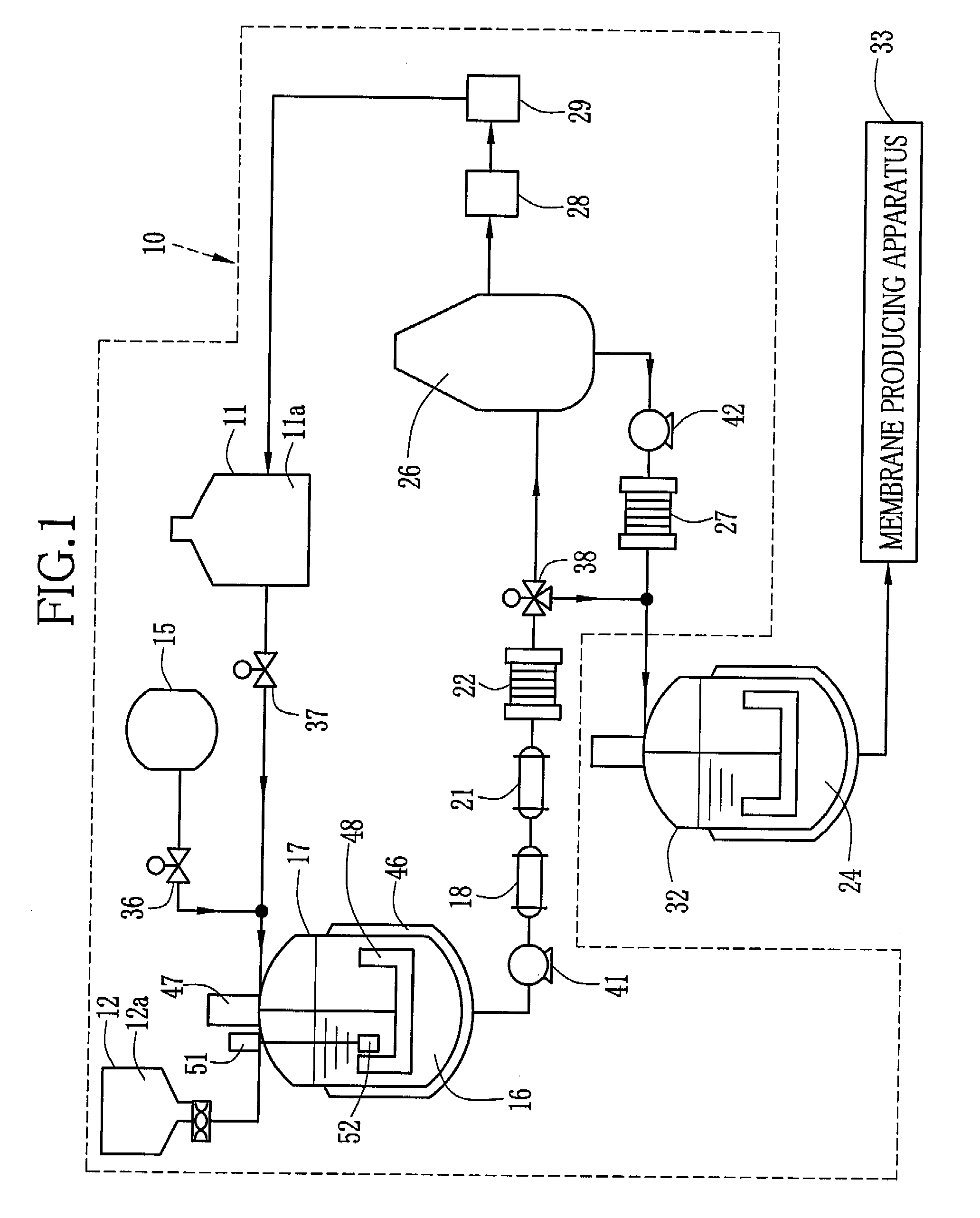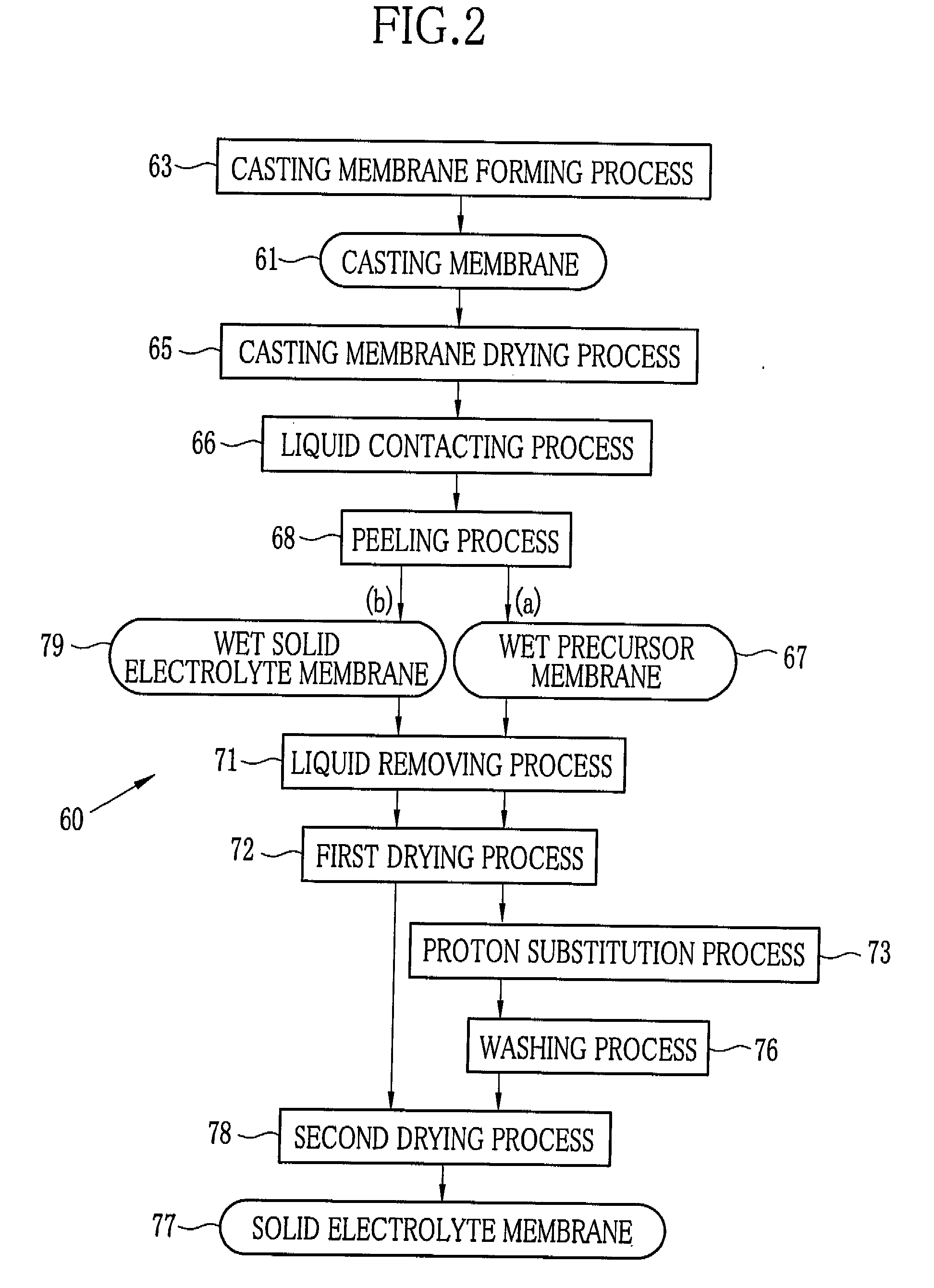Solid electrolyte membrane, method and apparatus for producing the same, membrane electrode assembly and fuel cell
a solid electrolyte membrane and fuel cell technology, applied in the direction of conductors, sustainable manufacturing/processing, final product manufacturing, etc., can solve the problems of low power density and durability of fuel cells, denatured polymers, and insufficient electromotive force of fuel cells using solid electrolyte membranes, etc., to achieve excellent electromotive force and high and uniform proton conductivity
- Summary
- Abstract
- Description
- Claims
- Application Information
AI Technical Summary
Benefits of technology
Problems solved by technology
Method used
Image
Examples
example 1
[0379]Next, Examples of the present invention are described.
[0380]A compound whose X in the chemical formula 1 was cation species other than a hydrogen atom H was used as the precursor. This precursor is referred to as a material A. In the material A, composition in the chemical formula 1 was as follows: X was Na, Y was SO2, n was 0.33, m was 0.67, Z was (I) of the chemical formula 2, the number average molecular weight Mn was 61000, and the weight average molecular weight Mw was 159000. The solvent was a mixture of solvent components 1 and 2 shown below. The solvent component 1 was a good solvent of the material A, and the solvent component 2 was a poor solvent of the material A. The material A and the solvent were mixed by the following composition to dissolve the material A in the solvent. Thus, a dope with the material A of 20 wt. % to the total weight thereof was formed. Hereinafter this dope is referred to as a dope A.
Material A100 pts. wtSolvent component 1: DMSO256 pts. wtSo...
example 2
[0383]The material A in the Example 1 was replaced by a material B, and a dope was produced by the following composition. Time for applying the dry air to any part of the casting membrane 61 by the casting membrane drying devices 81 was 20 minutes in a row. The time was determined such that the casting membrane 61 included 185 pts.wt of DMSO and 10 pts.wt of methanol to 100 pts.wt of the material B at a time of starting the liquid contacting process 66. Other conditions were same as those of the Example 1. In the material B, composition in the chemical formula 1 was as follows: X was Na, Y was SO2, Z was a mixture of (I) and (II) of the chemical formula 2, n was 0.33, m was 0.67, the number average molecular weight Mn was 68000, and the weight average molecular weight Mw was 200000. In the chemical formula 2, (I) was 0.7 mol %, (II) was 0.3 mol %. The solvent was a mixture of solvent components 1 and 2 shown below. The solvent component 1 was a good solvent of the material B, and th...
example 3
[0384]Time for applying the dry air to any part of the casting membrane 61 by the casting membrane drying devices 81 was 5 minutes in a row. The time was determined such that the casting membrane 61 included 195 pts.wt of DMSO and 100 pts.wt of methanol to 100 pts.wt of the material B at a time of starting the liquid contacting process 66. Other conditions were same as those of the Example 2.
PUM
 Login to View More
Login to View More Abstract
Description
Claims
Application Information
 Login to View More
Login to View More - R&D
- Intellectual Property
- Life Sciences
- Materials
- Tech Scout
- Unparalleled Data Quality
- Higher Quality Content
- 60% Fewer Hallucinations
Browse by: Latest US Patents, China's latest patents, Technical Efficacy Thesaurus, Application Domain, Technology Topic, Popular Technical Reports.
© 2025 PatSnap. All rights reserved.Legal|Privacy policy|Modern Slavery Act Transparency Statement|Sitemap|About US| Contact US: help@patsnap.com



